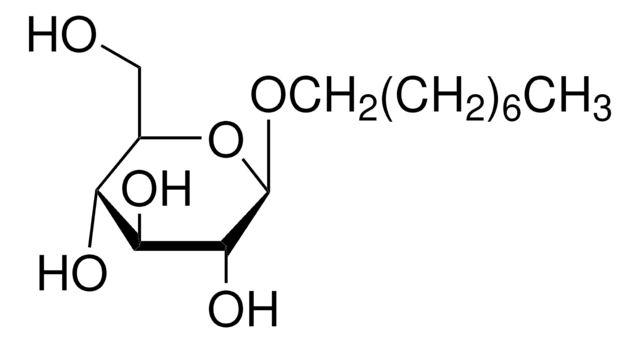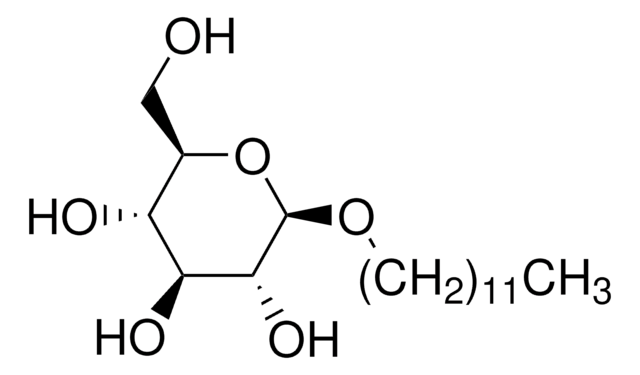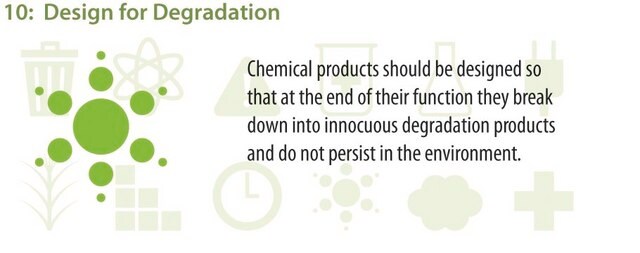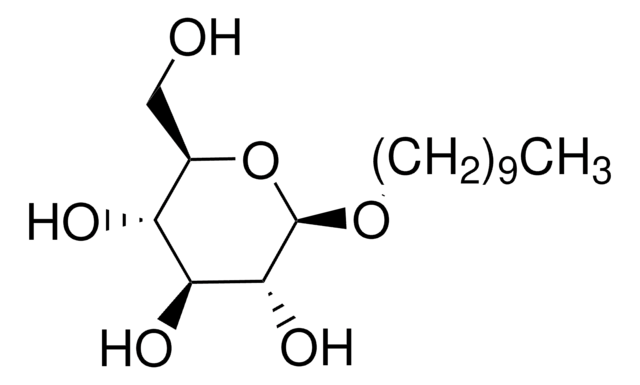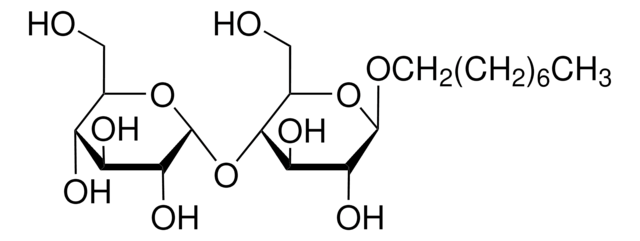Kluczowe dokumenty
10634425001
Roche
n-oktyloglukozyd
non-ionic
Synonim(y):
Octyl β-D-glucopyranoside, n-Octyl glucoside, OGP
About This Item
Polecane produkty
Próba
99% (GC)
masa cząsteczkowa
micellar avg mol wt 25,000
292.4
opakowanie
pkg of 10 g
producent / nazwa handlowa
Roche
liczba agregacji
84
metody
dialysis: suitable
CMC
20-25 mM (20-25°C)
temp. przejścia
cloud point >100 °C
Warunki transportu
ambient
ciąg SMILES
CCCCCCCCO[C@@H]1O[C@H](CO)[C@@H](O)[C@H](O)[C@H]1O
InChI
1S/C14H28O6/c1-2-3-4-5-6-7-8-19-14-13(18)12(17)11(16)10(9-15)20-14/h10-18H,2-9H2,1H3/t10-,11-,12+,13-,14-/m1/s1
Klucz InChI
HEGSGKPQLMEBJL-RKQHYHRCSA-N
Szukasz podobnych produktów? Odwiedź Przewodnik dotyczący porównywania produktów
Opis ogólny
Zastosowanie
Jakość
Ease of removal*: ++
CMC**: 14.5 mM at +25°C
Formula: C14H28O6
Uwaga dotycząca przygotowania
Working solution: Solubility: > 50% (w/v) in double-dist. water, Tris-HCl 0.05 mol/l; pH7.4 or K-phosphate buffer 0.1 mol/l, pH 7.0 at 25 °C.
Storage conditions (working solution): Stability in Solution
A stock solution is stable at 2 to 8 °C for approx. 3 days. We would expect a long term stability of 6-12 months if stored frozen in portions at -15 to -25 °C, provided bacterial contamination is avoided.
Przechowywanie i stabilność
Inne uwagi
Kod klasy składowania
11 - Combustible Solids
Klasa zagrożenia wodnego (WGK)
WGK 1
Temperatura zapłonu (°F)
Not applicable
Temperatura zapłonu (°C)
Not applicable
Wybierz jedną z najnowszych wersji:
Masz już ten produkt?
Dokumenty związane z niedawno zakupionymi produktami zostały zamieszczone w Bibliotece dokumentów.
Klienci oglądali również te produkty
Nasz zespół naukowców ma doświadczenie we wszystkich obszarach badań, w tym w naukach przyrodniczych, materiałoznawstwie, syntezie chemicznej, chromatografii, analityce i wielu innych dziedzinach.
Skontaktuj się z zespołem ds. pomocy technicznej